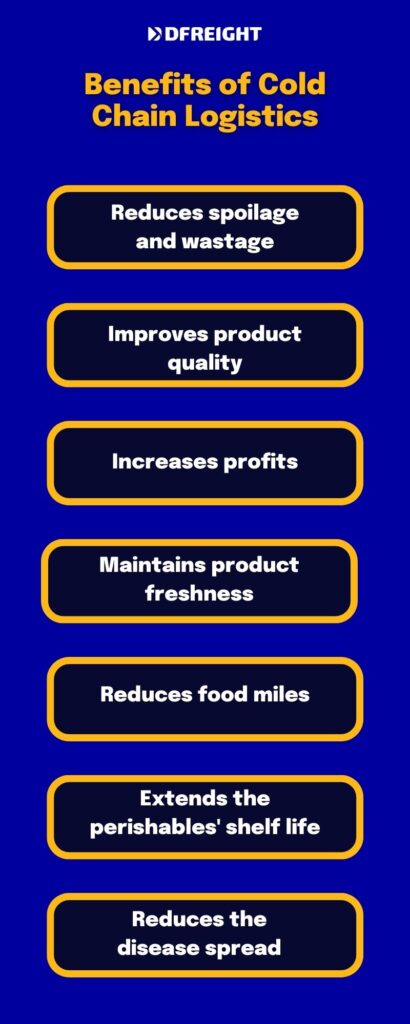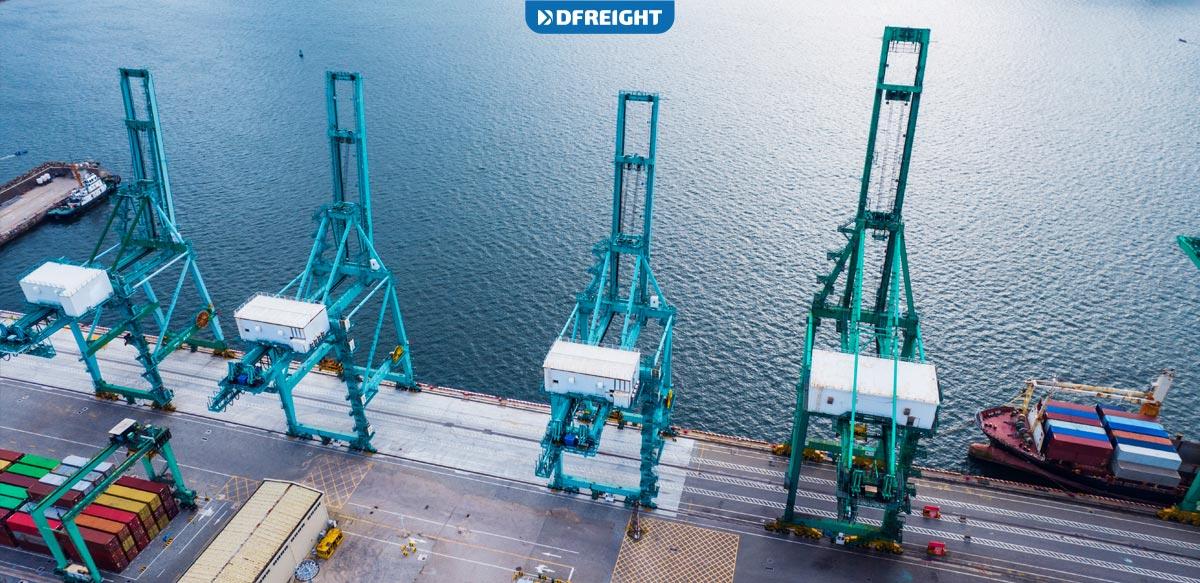In the transportation process, food, blood products, and pharmaceuticals are items that demand greater accuracy because of their complexity in terms of perishability, expiration dates, varying storage requirements, and travel distances. These kinds of commodities likewise have a more complicated distribution network. The supply chain of such goods is called the cold chain, and in this article, we will review its definition, importance, and how it works.
Table of Contents
What Is a Cold Chain?
Cold chain logistics transports temperature-sensitive goods in a controlled environment, typically using refrigerated vehicles and storage facilities. It is a management method that carefully plans and monitors the various stages from production to distribution of perishable goods. After the production of perishable products, various factors, such as temperature, humidity, etc., can affect the quality of these goods. With proper management, this system prevents this problem and helps reduce costs and waste, increase the productivity and revenue of suppliers, and customer satisfaction.
Due to their complexity, cold supply chains require more infrastructure, technology, and expertise investment. This means having trucks, warehouses, and containers suitable for the weather conditions, along with backup units to ensure the continuous supply of energy required for refrigeration, as well as temperature control systems, are required to report changes that may put the cargo at risk at any time.
Cold supply chains are essential for transporting perishable goods. It aims to extend the life of products and preserve their properties. However, these chains are important in managing highly heat- and cold-sensitive pharmaceutical products whose effects can be jeopardized by sudden temperature changes.
Application
The cold supply chain is a vital part of the food and pharmaceutical industries, as it helps to ensure the safety and quality of perishable goods. The cold supply chain transports and stores products such as meat, seafood, dairy, and fruits and vegetables in the food industry. The pharmaceutical industry uses the system to transport and store products such as vaccines and blood products.

The Benefits of Cold Chain Logistics
There are many benefits to cold chain logistics, both for businesses and consumers. For businesses, cold chain logistics can help to reduce spoilage and wastage, as well as improve the quality of products. This can lead to cost savings and increased profits. For consumers, cold supply chain logistics can help ensure they receive fresh, high-quality products.
Common Challenges
Unfortunately, cold supply chain logistics can be quite challenging, and several potential pitfalls can occur at any stage of the supply chain. One of the biggest challenges in cold chain logistics is maintaining consistent temperatures throughout the supply chain. Perishable goods are often sensitive to temperature changes; even a slight variation can cause spoilage or damage. As such, it is essential to have a well-designed cold chain that can maintain consistent temperatures throughout. Unfortunately, this can be difficult to achieve, and even small deviations can cause problems.
Another challenge is ensuring that the goods are properly protected from contamination. Because perishable goods are often quite sensitive to contamination, it is essential to have strict controls in place to prevent contamination from occurring. This can be a challenge, however, as there are many potential sources of contamination, and it can be difficult to track and prevent all of them. Finally, cold chain logistics can also be quite expensive. Maintaining proper temperatures throughout the supply chain requires a significant investment in equipment and infrastructure, and these costs can add up quickly. In addition, the cold supply chain often requires specialized personnel, which can also drive up costs.
As a result, this logistics system can be a significant expense for many businesses, and it is important to carefully consider the costs and benefits before implementing a cold chain solution.
Look to the Future
Factors that affect the future of this industry show that demand in this sector will increase in the coming years. These factors include the following:
- Retail growth worldwide
- Increased demand for refrigerated trucks to send perishable goods to retailers
- Increasing demand for perishable and ready-to-eat foods
- Increasing demand for cold chain supply systems in the pharmaceutical and medical industries
- Increasing demand for cold storage to preserve fruits and vegetables
According to Precedence Research, the global cold chain market size is projected to surpass around US$ 583.1 billion by 2030 and is growing at a CAGR of 15.1% from 2021 to 2030.
GlobeNewswire
Technology advancements have increased the infrastructure and facilities available to move more perishable goods through the cold chain.
Final Word
The cold chain is transforming quickly, just like the other areas of the transportation business. Equipment used to transport perishable commodities is becoming more accurate, and the likelihood of error is declining. The sector still has a long way to go.
DFreight provides top-quality service and is always here to help. Contact us today to get started.
How can I prevent cold chain failures?
You can prevent cold chain failures by investing in technology, implementing best practices, and working with a logistics provider.
What are the most common cold chain failures?
The most common cold chain failures include improper storage and transportation of perishable goods, inadequate temperature control, and human error.
What are some best practices for cold chain management?
Some best practices for cold chain management include maintaining accurate and up-to-date records, properly labeling and packaging perishables, and regularly inspecting storage and transportation facilities.
How can technology help improve cold chain management?
Technology can help to improve cold chain management by providing tools for tracking and tracing perishables throughout the supply chain, monitoring temperatures, and alerting stakeholders of potential problems.














